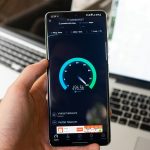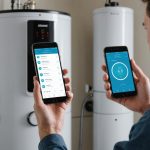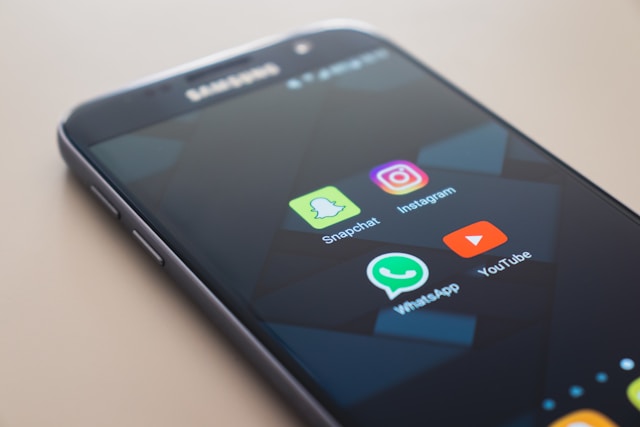As our homes become increasingly connected, managing everyday tasks through smart technologies is becoming the norm. One area seeing significant innovation is home irrigation. Gone are the days of manually setting timers or running outside to adjust the sprinkler system. Today, you can control and monitor your smart irrigation system right from your smartphone. This article will guide you through the benefits and features of using a smartphone app to manage your irrigation system, ensuring a lush lawn while saving water and time.
The Evolution of Smart Home Irrigation Systems
The transition from traditional irrigation systems to smart solutions represents a revolutionary leap in home and garden care. What once required manual labor and guesswork can now be managed effortlessly through advanced technologies integrated into your smart irrigation system. These systems, often referred to as smart controllers, leverage real-time data, weather forecasts, and advanced algorithms to optimize watering schedules.
Also to read : What Are the Methods to Integrate Voice Assistants with Smartphone-Controlled Smart Homes?
By harnessing the power of a smartphone app, you can achieve unparalleled control over your garden’s water needs. Companies like Hydrawise and others have developed robust systems that keep your lawn healthy while conserving water. The convenience of having all this control in the palm of your hand can’t be overstated. Your smartphone acts as the command center, allowing you to adjust watering times, monitor performance, and even receive alerts for potential issues.
Setting Up Your Smart Irrigation System
Before diving into controlling your irrigation system via smartphone, it’s essential to understand the setup process. Most smart irrigation systems come with user-friendly instructions and intuitive interfaces, but knowing what to expect can make the installation smoother.
In parallel : How Can You Use Your Smartphone to Control and Monitor Smart Home Water Heaters?
Firstly, choose a compatible smart irrigation controller. Popular options include Hydrawise, Rachio, and Orbit, among others. Once you’ve selected your controller, follow these general steps:
- Install the Controller: Mount the smart controller near your existing irrigation system. Ensure it has Wi-Fi access as this connection enables smartphone control.
- Connect Zones: Your irrigation system will be divided into zones, each representing different sections of your lawn or garden. Connect these zones to the smart controller.
- Configure the App: Download the corresponding app for your smart controller. Most manufacturers offer comprehensive apps that are compatible with both iOS and Android devices.
- Sync with Wi-Fi: Follow the app’s instructions to pair your controller with your home Wi-Fi network. Stable Wi-Fi is crucial for seamless operation.
- Input Data: Enter specific data about your lawn, such as types of plants, soil type, and sun exposure. This information will help the system create customized watering schedules.
Once your smart irrigation system is set up, you can begin exploring its features through your smartphone.
The Power of Real-Time Weather Data
One of the key advantages of a smart irrigation system is its ability to use real-time weather data to adjust watering schedules. Traditional timers are static and lack the flexibility to accommodate changing weather patterns. Smart controllers, however, leverage advanced weather forecasting to make intelligent decisions about when and how much to water.
Using your smartphone, you can access weather data and see how it influences your watering schedules. Most apps provide detailed insights into how weather conditions such as rainfall, temperature, and humidity impact irrigation needs. For example, if rain is forecasted, the app might skip a scheduled watering to conserve water. Conversely, during hot, dry spells, the system may increase watering frequency to ensure your lawn remains lush.
Furthermore, many apps allow you to set thresholds for weather conditions. You can specify how much rainfall is needed to skip watering or define temperature ranges that trigger different watering patterns. This level of customization ensures your irrigation system operates efficiently, saving water and promoting a healthier lawn.
Customizing Watering Schedules for Different Zones
A one-size-fits-all approach rarely works for home irrigation. Different areas of your lawn or garden have unique watering needs based on factors like plant type, soil composition, and sunlight exposure. Smart irrigation systems allow you to create customized schedules for each zone, ensuring every part of your landscape receives optimal care.
Using your smartphone app, you can easily adjust watering times and durations for each zone. This flexibility allows you to cater to the specific needs of various plants, from thirsty flowers to drought-resistant shrubs. Most apps offer visual interfaces where you can see your yard’s layout and manage zones with just a few taps.
Moreover, smart irrigation systems often include features like soil moisture sensors. These sensors provide real-time data on soil conditions, allowing the system to water only when necessary. By incorporating soil moisture data into your watering schedules, you can reduce water waste and enhance plant health.
Monitoring and Troubleshooting with Your Smartphone
One of the standout features of smart irrigation systems is the ability to monitor performance and troubleshoot issues remotely. Traditional systems often require manual checks and maintenance, but smart controllers offer real-time insights and alerts through your smartphone.
Through the app, you can monitor water usage, ensuring you stay within your desired limits. Many apps provide detailed reports on how much water each zone uses, helping you identify areas for improvement. If you notice unusually high water consumption, it might indicate a leak or malfunction in the system.
Furthermore, smart irrigation systems can detect issues like broken sprinkler heads or clogged nozzles. When a problem is detected, the app sends an alert to your smartphone, allowing you to address the issue promptly. Some systems even offer diagnostic tools to guide you through troubleshooting steps.
Remote monitoring also means you can manage your irrigation system while away from home. Whether you’re on vacation or at work, you can adjust schedules, check system status, and receive notifications, ensuring your lawn stays healthy without constant supervision.
Using your smartphone to control and monitor a smart home irrigation system brings unparalleled convenience and efficiency to lawn care. By leveraging real-time weather data, customizing watering schedules, and enabling remote monitoring, smart irrigation systems ensure your garden receives the precise amount of water it needs. Companies like Hydrawise and other leading brands offer user-friendly solutions that integrate seamlessly with your home Wi-Fi network and smartphone.
In essence, a smart irrigation system powered by your smartphone not only simplifies lawn maintenance but also promotes responsible water usage. By investing in such a system, you can enjoy a vibrant, healthy lawn while contributing to water conservation efforts. Embrace the future of home irrigation and unlock the full potential of your garden with the power of smart technology and your smartphone.
Whether you’re a seasoned gardener or a busy homeowner looking for convenience, smart irrigation systems offer a modern solution to traditional lawn care challenges. Make the switch today and experience the benefits of a well-maintained garden with minimal effort.











